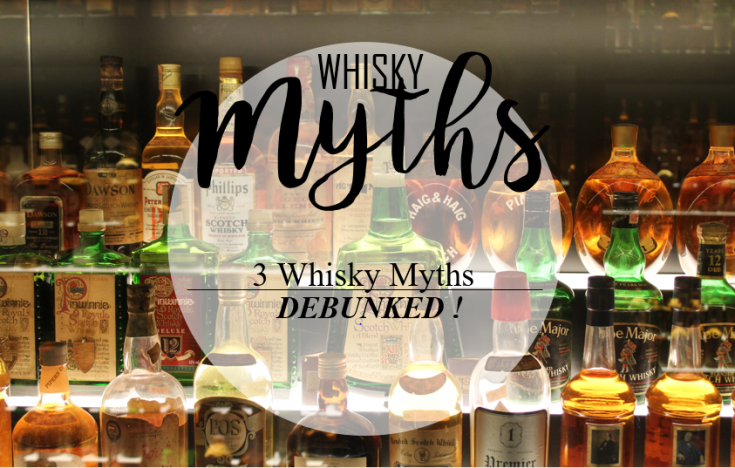
Each episode of this series is meant to have a look at 3 statements I have been repeatedly hearing since I have started my wonderful journey in the rewarding world of whisky (for more, see previous episodes 1 and 2). This third edition has been put together thanks to the daily messages I received through my blog or on social media. Instead of answering you individually, I thought it could be interesting and more beneficial to do it here!

“Bourbon can only be made in Kentucky” ![]() –> While more than 80% of the world’s bourbon indeed comes from Kentucky, there’s actually not such a thing as what we know as a “PGI” in Europe (Protected Geographical Indication) implying that Bourbon can only be made in this specific state.
–> While more than 80% of the world’s bourbon indeed comes from Kentucky, there’s actually not such a thing as what we know as a “PGI” in Europe (Protected Geographical Indication) implying that Bourbon can only be made in this specific state.
Bourbon has been declared a “Native product of The United States” by the Congress in 1964, meaning bourbon can be made anywhere in the US but needs to respect some strict rules: it has to be made with a minimum 51% corn content, distilled to no higher than 160 proof, and barreled at no higher than 62.5% ABV in charred, new oak containers.
Now, there’s still this common belief that the best Bourbon is from Kentucky… But as I’ve recently discovered that the best waffles weren’t necessarily from Belgium, I cannot take side here.
Oh and btw, here’s a bonus myth when it comes to Bourbon: yes, Jack Daniel’s is technically a Bourbon. 😉

“All whiskies have to be at least bottled at 40% abv to be called whisky” ![]() –> While this is mostly true for most of the international whisky scene (and define by law) you can still sometimes (very rarely) come across some expressions bottled at 39% – as an example, you may be familiar with this cute release from Mars Shinshu “The Lucky Cat“, bottled at 39% and still labelled as whisky.
–> While this is mostly true for most of the international whisky scene (and define by law) you can still sometimes (very rarely) come across some expressions bottled at 39% – as an example, you may be familiar with this cute release from Mars Shinshu “The Lucky Cat“, bottled at 39% and still labelled as whisky.
There are actually still no official regulations in Japan when it comes to whisky as there is for instance in Scotland… You might think “yeah it’s fine it’s still quite a new industry”, it’s freaking not! Japanese have been distilling since the 1920s, almost for a century now, so you’d think someone would step up and go “hey guys what the heck are we doing, we probably need to cover our ass?!“… The lack of regulations have even allowed some unscrupulous actors to import some spirit from abroad, only bottling it in Japan and release it as Japanese whisky… Now you’ll think about it twice before buying the first bottle you see bearing some exotic Haïku on the label 😉

“The water source of a distillery is crucial, man, I can even detect its characteristics in my dram that’s amazing!” ![]() –> Come on you’re not Richard Paterson and its £1.6-million nose, don’t fool yourself! While water is indeed crucial all along the whisky making process (from malting, mashing, to distillation & more) and also used to reduce the spirit before bottling, the oh-so-poetical tales of the landscape it ran through has in fact not much influence in the taste of your dram after all the steps it went through (but this is still debated amongst distillers).
–> Come on you’re not Richard Paterson and its £1.6-million nose, don’t fool yourself! While water is indeed crucial all along the whisky making process (from malting, mashing, to distillation & more) and also used to reduce the spirit before bottling, the oh-so-poetical tales of the landscape it ran through has in fact not much influence in the taste of your dram after all the steps it went through (but this is still debated amongst distillers).
Of course, taking your water from a high-altitude mysterious loch with a lyrical name is better storytelling for tour guides & marketers than simply saying the distillery goes for public supply water but that won’t make the latest option less tasty. Don’t get me wrong though, distilleries can’t use just any water and there are also strict regulations to comply to when it comes to water used to reduce before bottling – but that’s another story!




